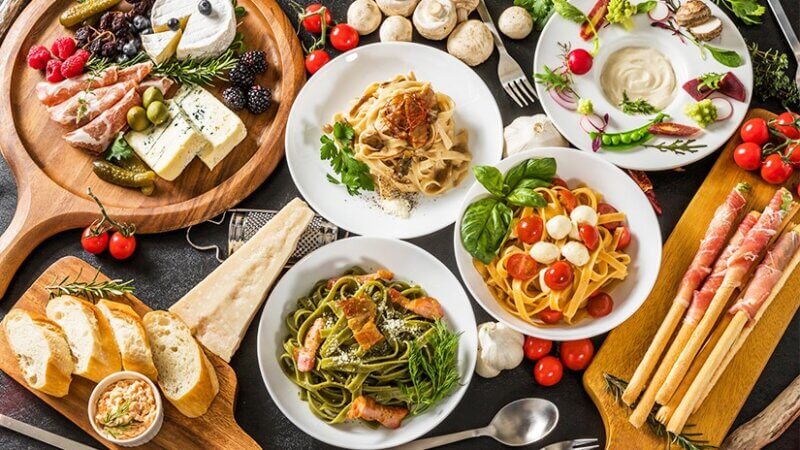Slow Food working to undo fast-food excesses
When we were growing up, our parents told us to chew our food 10 times (with mouth closed, of course) before swallowing. Until a few years ago, that was what we thought of as slow food. We still take our time chewing, but now understand that phrase as something different and much more exciting.
Slow Food is a global movement working to prevent the disappearance of local foods and food traditions, and to promote more interest in the food we eat, where it comes from and how our food choices affect the world around us.
The Slow Food organization started in the late 1980s after Italians strongly protested the opening of a McDonald’s fast-food restaurant in the heart of Rome. They saw fast food as a cultural anathema, offending the sensibility of the Italian tradition of taking time and care with sourcing, preparing and appreciating food and, when possible, eating slowly with others and allowing time for conversation.

The ideas of slow food quickly spread, and now millions of people in more than 160 countries are working to promote them. Founder Carlo Petrini explains that the basic belief is that everyone has the right to “good, clean and fair food” with good meaning a high quality product with a flavorful taste; clean meaning the naturalness in the way the product was produced and transported; and fair meaning adequate pricing and treatment for both the consumers and producers.
Why is it important to pay attention to this? The rise of commodity agriculture and the processed food industry with its forceful marketing, pressures consumers to buy highly- processed, fast food. Fast food is touted as more convenient than real food and therefore more desirable in today’s fast-paced world, despite being less nutritious and often unhealthy for us.
It can be cheaper to make and sell because of the use of uniform ingredients available in large quantities. Fast food also commonly uses cheaper but unhealthy oils like palm oil and lots of salt. These two particularly, along with high-fructose corn syrup, trigger our brains to crave more, even when we know they are unhealthy for us, being significant contributors to heart disease, diabetes, obesity and other serious health problems.
The aggressive marketing of these high-calorie, low-nutrition products and the societal pressure on us to do everything as fast as possible makes it less likely we’ll eat a well-balanced diet that provides what we need to be healthy. We are too easily persuaded that food choices are basically just financial transactions rather than relationships with places and people who make real food for us.
For more information about the health, environmental and cultural benefits of eating real food, see especially books by Michael Pollan’s “In Defense of Food,” which includes his well-known advice not to eat anything your great-grandmother wouldn’t recognize as food; Alice Waters’ “We Are What We Eat;” and Vandana Shiva’s “Who Really Feeds the World?”
The processed food industry makes it hard for smaller-scale alternatives of minimally processed and fresh local foods to compete on price, distribution and year-round availability. Slow Food encourages those of us, who still do have access to fresh and minimally processed food and who have enough flexibility in our food budget, to help keep that part of our economy going. Without us, it won’t survive and neither will the biologically and culturally rich diversity of food it’s based on.
The good news is that many informed people are becoming intentional consumers and choosing a way of eating that respects seasonality, reduces environmental impact within food production and distribution, encourages better education about the local and regional food system, financially supports diverse local producers, and protects the continuation of our edible biodiversity and food-related cultural heritage. We can help those with limited food budgets to do the same, for example, by supporting programs such as Supplemental Nutrition Assistance Program benefits at farmers’ markets and community-based and sourced programs to reduce food insecurity.
Slow Food uses the strong connections between plate, planet, people, politics and culture to work toward a world in which all people can access and enjoy food that is good for them, good for those who grow it and good for the planet.
Slow Food is active in Vermont. Like other chapters, Slow Food Vermont has contributed to the Ark of Taste initiative, Slow Food’s living catalog of delicious and distinctive foods facing extinction biologically or as culinary traditions. By identifying and championing these foods, we help keep them in production and on our plates. Vermont’s list includes: boiled cider and cider jelly of New England; wild ramps; Gilfeather turnip; Randall cattle; Green Mountain potato; and Roy’s Calais Flint corn. You can find information about this and the other regional Slow Food programs.
Slow Food is right here in Charlotte, too. Charlotte Library has incorporated the principles into its educational programs. The library’s Seed Library program promotes heirloom vegetable varieties, encouraging residents to grow some of their own food, offering seeds and technical support programs for regenerative gardening and seed saving.
Slow Food reminds us that eating is not only necessary and pleasurable, it is also a political act which influences the future availability of real food.
